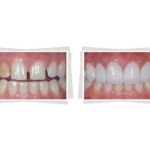- Your cart is empty
- Continue Shopping
What exactly does a periodontist do?

Today we are going to explore what periodontists do.
There are many types of dentists who all perform vital functions for your gums, teeth, and beyond. While all dentists can practice general dentistry, a specialist who focuses on your gums and bones that support your teeth is called a periodontist. Periodontists are a much needed type of dentist because without healthy gums and support (via your bones), your teeth won’t be healthy.
What is a Periodontist?
Many dentists in dental school choose various routes besides just being a general dentist. Aspiring dentists have the option of getting additional education to become a periodontist.
So what is a Periodontist? According to the American Academy of Periodontology (AAP), a periodontist is “a dentist who specializes in the prevention, diagnosis, and treatment of periodontal disease, and in the placement of dental implants.”
Periodontists also have the expertise needed to treat oral inflammation of the gums and bones surrounding your teeth. In general Periodontists receive 3 or more years of specialty training after they complete dental school education on demonstration of different type of restoration surgery with dental tools like suture practice kit for medical students, root canal files, dental burs, hand piece, articulator etc., Periodontists will complete residency programs and continue training in specialized education throughout the remainder of their careers.
What in the World Do Periodontists Do?
A periodontist’s goal is to try to preserve, repair and restore as much of a patient’s bone and tissue and to try to get them to be as healthy as possible. However, when a patient’s bone and tissue reach a place of no return, periodontists have techniques that fall into 6 buckets of treatments:
- Hard Tissue Procedures
Hard tissue procedures, also known as osseous procedures, include treatments like bone grafting, bone recontouring, and tori removal,
- Soft Tissue Procedures
Soft tissue procedures include gum grafting, gingivectomy, gingivoplasty, pedicle flaps, root coverage procedures, frenectomies, and biopsies.
- Extraction Procedures
A periodontist will perform extractions when he or she removes a patient’s tooth or teeth. A common extraction type is wisdom teeth extraction, which many people get. Sometimes, a tooth may be decayed, which is another reason to get a tooth removed.
- Dental Implant Procedures
Sometimes a tooth cannot be saved and is lost to trauma or periodontal disease. In this case, a tooth can be replaced with an implant. Today’s dental implants are highly engineered and made of titanium so that your bone will grow into it.
- Combinations of Soft and Hard Tissue Procedures
Some procedures require both soft and hard techniques. One common combination procedure that periodontists perform is pocket elimination, or gum surgery. Pocketing happens when the bone around a tooth recedes and the gum stays in place, resulting in air between the gum and the tooth (where the tooth used to be). Periodontists then use a small ruler called a periodontal probe to see how much space is between the bone and the tooth. When people don’t floss, the bacteria builds up, producing an acid that dissolves a person’s bone and support structures. Similar to having a splinter in your finger, your gums become inflamed when this acid is present. Major Ouch!
This procedure has not only saved millions of teeth over the years but has helped relieve pain and discomfort for many patients.
Another example of a soft and hard tissue procedure is the “gummy” smile look, when a person’s smile appears to be overpowered by extra gums. In reality, the teeth most likely are the proper length, but the person’s gums come too far down the tooth. During this surgery, a periodontist will reshape the gum and expose more of the tooth so that a patient’s smile looks its best.
- Cosmetic Procedures
Sometimes a medical procedure is not required, but cosmetically the patient wants to look better. Insert cosmetic contouring. Cosmetic contouring is like plastic surgery of the gum, many people choose to have procedures like this to create an even smile.




